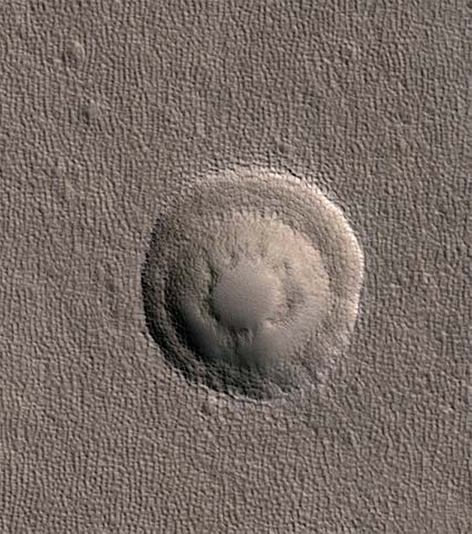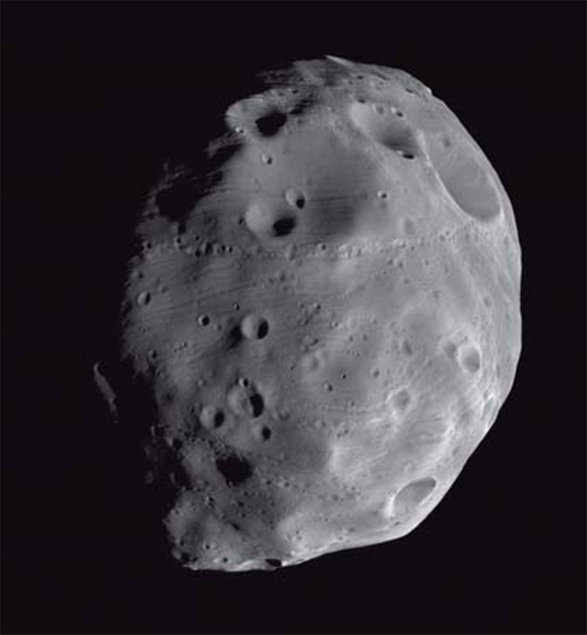When NASA first sent
Curiosity to Mars, what did it hope to learn?
Curiosity is the culmination of 20 years of Mars exploration. Scientists knew there had probably been water on Mars in the past. We did not know whether water on Mars had been a transient thing, or if Mars had once been Earth-like: Was there water that lasted a really long time, creating habitable environments where little bugs might have originated and thrived? Curiosity answered that question about a year into the mission, affirmatively, yes. Now the mission is all about characterizing how long there was water, what the climate was like when water existed, the kinds of environments that were there, the scope of places where life could have once lived.
Is it fair to say that Curiosity is a robotic geologist?
Absolutely. John Grotzinger, the project scientist [from 2007 to 2015], realized it wasn’t enough to have planetary geologists looking at satellite images. This robot is a field geologist, and so, to get good science, you’d need to involve people with experience doing Precambrian field geology on Earth—people who understood the environments that existed before there was land life on Earth. Grotzinger’s daughter is now a geology major at Amherst, so we’re closing the circle on that one.
There are 10 scientific instruments onboard Curiosity. Pick one of them and explain what it does and why it’s important.
It’s hard to choose between the two that are Curiosity’s heart and soul.
I’ll give you two.
I’ll start with the CheMin, an instrument that determines and measures the minerals present in a rock. As any geologist will tell you, minerals are key to understanding the history of rock: how it formed, the temperatures that existed, what’s happened since it formed, whether the minerals got altered by water. This is a standard piece of equipment used by geologists on Earth: you get a sample, crush it into a powder, put it in your machine. The crazy thing is, at UMass that instrument—is it still the size of a refrigerator?
Yes. They’re getting smaller, but why make it small if you don’t need to?
Exactly. CheMin on Curiosity could not be the size of a refrigerator. It’s about the size of a toaster—and that’s probably mind-boggling to any geologist who has ever worked with a similar machine. It’s a fairly straightforward instrument—put powder in, get mineralogy out—so, really, the challenge was getting it to Mars in the first place.
What have we learned from CheMin?
We’ve learned that the rocks at Curiosity’s landing site contain a lot of clay. Clay forms when you take the more common minerals in volcanoes and attack them with water. These rocks were exposed to water for long enough to fundamentally change their nature—and that change took place in a moderate-temperature, moderate-pH place where Earth life would probably be fairly happy. CheMin has done other cool things, too, including the first rock dating on the surface of Mars. Some of the minerals are 4 billion years old (give or take 600 million), which tells you the rocks could be nearly as old as the solar system.
What does the second instrument do?
It’s called SAM, for Sample Analysis at Mars. It’s a gas chromatograph mass spectrometer with a tunable laser spectrometer, and it looks for organic materials in the rocks. I want to be careful when I talk about organic materials, because a lot of people hear organic and think life. If they found organics, that means they found life. No, that’s not how it works. Organic chemicals are any molecules that have carbon in them. Organic materials form naturally in the solar system, without requiring life. If you can find them preserved in ancient rocks, that tells you that the environment that existed when those rocks were formed was one that did not bust up organic materials, did not oxidize them, did not break them down. Give them enough time, happenstance and who knows what else—they could become life. SAM has proved that Mars had those conditions.
This mission is at the limit of what humans are capable of doing remotely—and even, possibly, beyond that limit.
I want to clarify something: You don’t work, nor have you ever worked, at NASA, right?
That is correct.
How did you gain entry into all of this information?
I love this question, because it allows me to talk about how NASA is one of the most open federal agencies out there. NASA has a mandate to share all of its information with the public, so all the data that comes back from space missions is generally made public within six months, on average, of its acquisition, after it’s been validated.
I’m now going to ask some philosophical questions. The first is: In writing the book, what did you learn that isn’t specifically about Curiosity?
I learned that this mission is at the limit of what humans are capable of doing remotely—and even, possibly, beyond that limit. Sometimes you create an entity so complex that humans are incapable of understanding everything it does and can do, and therefore how to operate it most efficiently. I could be talking here about a space rover, but I could also be talking about a government. The current project scientist, Ashwin Vasavada, told me that this rover has emergent behaviors that are impossible to predict, so the operation of it is always a response to what you couldn’t imagine happening. And so you have to guide your complicated machine with knowledge and understanding, but also with pragmatism. You have to be willing to accept a certain level of nonfunctioning or nonefficient functioning just for the whole machine to move forward. I think that’s true of any complex entity.





